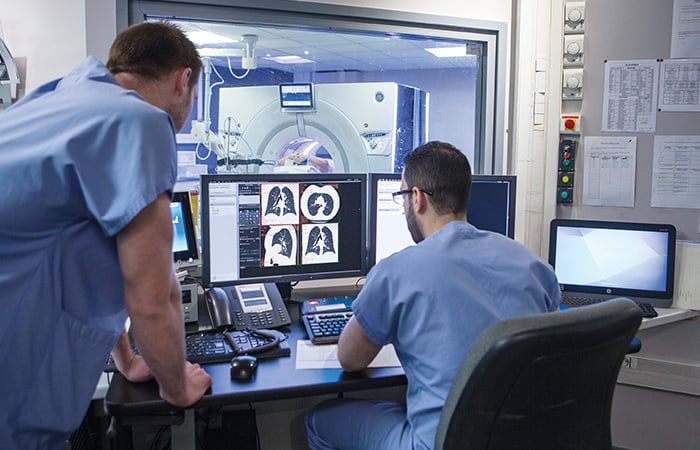Medical Exo AI-Powered: Revolutionizing Healthcare
In recent years, the field of healthcare has witnessed remarkable advancements in technology. One such innovation that is revolutionizing the medical industry is the development of medical exoskeletons powered by artificial intelligence (AI). These exoskeletons, designed to assist patients with mobility impairments, are equipped with AI algorithms that enable them to adapt to the user’s movements and provide personalized support. This article explores the various applications and benefits of medical exoskeletons powered by AI, shedding light on how this technology is transforming the lives of patients and healthcare providers alike.
Enhancing Mobility and Rehabilitation
The primary objective of medical exoskeletons powered by AI is to enhance mobility and rehabilitation for individuals with physical disabilities. These exoskeletons are designed to provide support and assistance to patients who have difficulty walking or performing daily activities independently. By analyzing the user’s movements in real-time, the AI algorithms embedded in the exoskeleton can adjust the level of assistance required, providing a persoaalized experience for each individual. This adaptability ensuresa that patients receive the right amount of support, allowing them to regain their mobility and independence.
Furthermore, medical exoskeletons powered by AI have proven to be effective in rehabilitation programs. By providing a controlled environment for patients to practice their movements, these devices can aid in the recovery process after injuries or surgeries. The AI algorithms monitor the patient’s progress and adjust the level of assistance accordingly, ensuring that the rehabilitation program is tailored to their specific needs. This personalized approach not only accelerates the recovery process but also improves patient outcomes.
Reducing Physical Strain on Healthcare Providers
The use of medical exoskeletons powered by AI not only benefits patients but also reduces physical strain on healthcare providers. Traditionally, assisting patients with mobility impairments requires significant physical effort from caregivers, often leading to fatigue and musculoskeletal injuries. However, with the introduction of AI-powered exoskeletons, healthcare providers can rely on these devices to provide the necessary support, reducing the physical strain on their own bodies.
Moreover, the AI algorithms embedded in these exoskeletons can analyze the patient’s movements and provide real-time feedback to healthcare providers. This feedback enables them to monitor the patient’s progress more effectively and make informed decisions regarding their treatment plans. By automating certain aspects of patient care, medical exoskeletons powered by AI streamline the workflow for healthcare providers, allowing them to focus on other critical tasks and ultimately improving the overall quality of care.
Enhancing Patient Safety and Comfort
Another significant advantage of medical exoskeletons powered by AI is the enhanced safety and comfort they provide to patients. These devices are equipped with sensors that detect the user’s movements and adjust the exoskeleton’s support accordingly. This real-time adjustment ensures that patients maintain a stable posture while walking or performing activities, reducing the risk of falls or injuries.
Furthermore, the AI algorithms in these exoskeletons continuously learn from the user’s movements, adapting to their specific needs over time. This personalized approach not only enhances patient comfort but also reduces the likelihood of discomfort or pain associated with prolonged use. By providing a comfortable and safe experience, medical exoskeletons powered by AI encourage patients to engage in physical activities, promoting their overall well-being and improving their quality of life.
Promising Future Developments
The field of medical exoskeletons powered by AI is rapidly evolving, with ongoing research and development aimed at further enhancing their capabilities. Future developments may include improved sensor technology, allowing for even more precise movement analysis and adjustment. Additionally, advancements in AI algorithms may enable exoskeletons to anticipate the user’s movements, providing proactive support rather than reactive assistance.
Furthermore, the integration of AI-powered exoskeletons with other healthcare technologies, such as telemedicine and electronic health records, holds great potential. This integration could enable healthcare providers to remotely monitor patients’ progress, adjust treatment plans, and provide personalized care from a distance. Such advancements have the potential to revolutionize the way healthcare is delivered, particularly in remote or underserved areas.
Conclusion:
Medical exoskeletons powered by AI are transforming the healthcare landscape by enhancing mobility and rehabilitation, reducing physical strain on healthcare providers, enhancing patient safety and comfort, and paving the way for promising future developments. As this technology continues to evolve, it holds tremendous potential to improve the lives of patients with mobility impairments and revolutionize the way healthcare is delivered. With ongoing research and development, medical exoskeletons powered by AI are poised to become an integral part of modern healthcare, providing personalized support and improving patient outcomes.













Post Comment